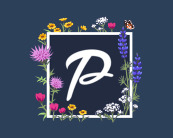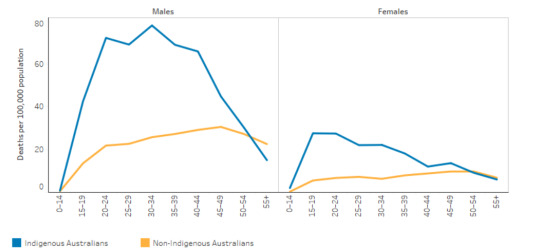#balancing blogging and web development
Explore tagged Tumblr posts
Text
Do You Need More Time? Finding Balance and Achieving Goals as a Blogger and Web Developer
Ever feel like there just aren’t enough hours in the day to reach your goals? ⏳ As a blogger and web developer, I know how hard it can be to balance projects, learn new skills, and stay motivated all at once. In my latest blog, I share my approach to managing time better—setting priorities, creating balance, and making the most of every moment. Whether you’re pursuing creative projects, career growth, or personal goals, you don’t always need more time; you might just need a new strategy! Check it out and get inspired to make every minute count! 🕰️✨
Do you need time? Introduction: The Question of Time In today’s fast-paced world, time often feels like our most precious—and limited—resource. As a blogger and web developer, balancing multiple roles can make it feel like there’s never enough time to accomplish everything. But does success require more time, or simply better time management? In this blog, I’ll share my approach to finding…
#achieving digital career goals#avoiding burnout#balancing blogging and web development#blogging journey#dailyprompt#dailyprompt-2113#focus techniques#managing multiple roles#prioritizing tasks#productivity tips for web developers#setting goals for digital creators#time management for bloggers#time management strategies#web development growth#Work-Life Balance
0 notes
Text
Why Writers Don't Finish Writing Their Stories, and How to Fix It
Hello fellow writers and storytellers,
The journey of writing a story is an exhilarating adventure, but it's not without its share of obstacles. Many of us have embarked on a creative endeavor, only to find ourselves mired in the struggle to finish what we started. In this blog post, I'll unravel the common reasons why writers don't finish their stories and explore practical strategies to overcome these hurdles and reignite the flame of creativity.
The Perils of Unfinished Stories
As writers, we often find ourselves in the throes of unfinished tales, grappling with the intricate web of characters, plots, and themes. There are several reasons why the ink dries up and the story remains untold. Let's shine a light on the familiar adversaries that stand between us and the triumphant completion of our narratives:
1. Lack of Planning:
Some of us brazenly dive into our stories without a clear roadmap, resulting in uncertainty about the direction of the plot and the fate of our characters. The lack of a solid plan can lead us astray, leaving our stories wandering in the wilderness of aimlessness.
2. Self-Doubt and Perfectionism:
Ah, the relentless whispers of self-doubt and the siren call of perfectionism! These twin adversaries can cast a shadow over our creative vision, compelling us to endlessly revise and perfect the early chapters, trapping us in a whirlpool of perpetual edits.
3. Time Management:
Balancing the demands of daily life with the ardor of writing can be akin to walking a tightrope. The struggle to find consistent time for our craft often leaves our stories languishing in prolonged periods of inactivity, longing for the touch of our pen.
4. Writer's Block:
The mighty barrier that even the most intrepid writers encounter. Writer's block can be an insurmountable mountain, leaving us stranded in the valleys of creative drought, unable to breathe life into new ideas and narratives.
5. Lack of Motivation:
The flame that once burned brightly can flicker and wane over time, leaving us adrift in the murky waters of disillusionment. The initial excitement for our stories diminishes, making it arduous to stay committed to the crafting process.
6. Fear of Failure or Success:
The twin specters that haunt many writers' dreams. The apprehension of rejection and the unsettling prospect of life-altering success can tether us to the shores of hesitation, preventing us from reaching the shores of completion.
7. Criticism and Feedback Anxiety:
The looming dread of judgment casts a long shadow over our creative endeavors. The mere thought of receiving criticism or feedback, whether from peers or potential readers, can cast a cloud over our storytelling pursuits.
8. Plotting Challenges:
Crafting a cohesive and engaging plot is akin to navigating a labyrinth without a map. Faced with hurdles in connecting story elements, we may find ourselves lost in a maze of plot holes and unresolved threads.
9. Character Development Struggles:
Breathing life into multi-dimensional, relatable characters is a complex art. The intricate process of character development can become a quagmire, ensnaring us in the challenge of creating personas that drive the story forward. (Part one of Character Development Series)
10. Life Events and Distractions:
Unexpected events in our personal lives can cast ripples on our writing routines, interrupting the flow of our creativity and causing a loss of momentum.
Rallying Against the Odds: Strategies for Success
Now that we've confronted the adversaries that threaten to stall our storytelling odysseys, let's arm ourselves with strategies to conquer these barriers and reignite the flames of our creativity.
Embrace the Power of Planning:
A clear roadmap illuminates the path ahead. Arm yourself with outlines, character sketches, and plot maps to pave the way for your story's journey.
Vanquish Self-Doubt with Action:
Silence the voices of doubt with the power of progress. Embrace the imperfect beauty of your early drafts, knowing that every word brings you closer to the finish line.
Mastering the Art of Time:
Carve out sacred writing time in your schedule. Whether it’s ten minutes or two hours, every moment dedicated to your craft is a step forward.
Conquering Writer's Block:
Embrace the freedom of imperfection. Write, even if the words feel like scattered puzzle pieces. The act of writing can unravel the most stubborn knots of writer's block.
Reigniting the Flame of Motivation:
Seek inspiration in the wonders of the world. Reconnect with the heart of your story, rediscovering the passion that set your creative spirit ablaze.
Reshaping Fear into Fuel:
Embrace the uncertainty as an integral part of the creative journey. Embrace the lessons within rejection and prepare for the winds of change that success may bring.
Navigating the Realm of Criticism:
Embrace feedback as a catalyst for growth. Constructive criticism is a powerful ally, shaping your story into a work of art that resonates with readers.
Weaving the Threads of Plot:
Connect the dots with fresh eyes. Step back and survey the tapestry of your plot, seeking innovative solutions to bridge the gaps and untangle the knots.
Breathing Life into Characters:
Engage with your characters as if they were old friends. Dive into their depths, unraveling their quirks, fears, and dreams, and watch as they breathe life into your story.
Navigating Life's Tempests:
Embrace the ebb and flow of life. Every pause in your writing journey is a chance to gather new experiences and perspectives, enriching your storytelling tapestry.
The Ever-Resting Pen: Harnessing the Power Within
Fellow writers, the journey of completing a story is filled with peaks and valleys, each offering us the opportunity to sharpen our resolve and unleash our creative potential. As we stand at the crossroads, staring at the canvas of unfinished tales, let's rally against the odds, armed with the power of purpose, passion, and perseverance.
Let the ink flow once more, breathing life into tales left untold, and watch as your stories triumphantly reach their long-awaited conclusion. You possess the power to conquer the adversaries that stand in your way, and within you lies the essence of untold narratives waiting to unfurl onto the page.
Here's to the journey that lies ahead, the stories waiting to be written, and the unyielding spirit of creativity that thrives within each of us.
Warm regards and unwavering encouragement, Ren T.
#creative writing#thewriteadviceforwriters#writing#writeblr#on writing#writing tips#writers block#how to write#writers and poets#novelist#novel writing#november#novel
3K notes
·
View notes
Text
What is Weather Shamanism?

Weather Shamanism is a spiritual practice rooted in ancient traditions that seeks to build a deep, reciprocal relationship with the forces of nature, particularly the weather. It blends shamanic techniques with ecological awareness, enabling practitioners to understand, influence, and harmonize with the elements--wind, rain, sun, and storms. Far from being an esoteric or mythical pursuit, weather shamanism invites us to rediscover our inherent connection with the Earth and play an active role in its ecological balance. In this blog post, we'll explore the origins of weather shamanism, its principles, practices, and the role it plays in fostering a harmonious relationship between humans and the environment.
Origins of Weather Shamanism
Shamanism, as a spiritual practice, predates organized religion and exists in cultures worldwide. The shamans, or spiritual leaders, of these communities served as intermediaries between humans and the spirit world. Many shamanic traditions included working with weather as a vital aspect of maintaining balance within their communities.
Indigenous Roots: Weather shamanism has been integral to many Indigenous cultures. Tribes across Africa, Asia, the Americas, and Oceania developed rituals to call forth rain during droughts, calm storms, or invoke the wind for agriculture and travel.
Cultural Interpretations: For example, the Mongolian shamans revered Tenger ("eternal blue sky") as a divine force controlling weather. Similarly, Native American tribes had specific rain dances and ceremonies to honor and petition weather spirits.
These practices were not merely superstitions but profound ecological insights. Early shamans understood that respecting nature's rhythms and cycles was critical for survival.
Principles of Weather Shamanism
At its core, weather shamanism is built on the principles of interconnection, reciprocity, and reverence for nature.
Interconnection: Practitioners believe humans are not separate from nature but part of a vast, interdependent web of life. The weather is viewed as a dynamic expression of this interconnection.
Reciprocity: Weather shamans emphasize giving back to nature in exchange for its gifts. This might involve offerings, rituals, or simply adopting sustainable practices to honor the Earth.
Communication: Weather shamanism teaches that the elements--air, water, fire, and earth--are alive and sentient. Through prayer, meditation, and ritual, practitioners seek to communicate with the spirits of these elements.
Balance and Harmony: The ultimate goal is to maintain harmony between human activities and natural systems. Practitioners aim to mediate and heal disruptions caused by ecological imbalance, such as extreme weather events.
Practices in Weather Shamanism
Weather shamanism combines ancient techniques with modern spiritual approaches. Here are some common practices:
Rituals and Ceremonies
Rituals play a crucial role in weather shamanism. These might include:
Rainmaking Ceremonies: Invoking rainfall through dances, prayers, or offerings.
Wind Calling: Appealing to the spirits of the wind for favorable breezes.
Storm Calming: Seeking to pacify storms through chants, drums, or meditative practices.
2. Journeying
Shamans often undertake journeys into non-ordinary realities to connect with weather spirits. This involves:
Entering a trance-like state through drumming or other rhythmic sounds.
Meeting spirit guides who represent specific weather forces.
Gaining insight into weather patterns or receiving instructions on how to address imbalances.
3. Elemental Offerings
Offerings, such as food, flowers, or symbolic objects, are made to honor and thank the elements. For example:
Pouring water into the earth to appease rain spirits.
Burning herbs or incense to honor air spirits.
4. Meditation and Visualization
Modern practitioners often use meditation or visualization to connect with the elements. For instance:
Visualizing rain nourishing parched land.
Meditating on the warmth of the sun to foster inner and outer balance.
Weather Shamanism in Modern Times
In today's world, weather shamanism is experiencing a resurgence as people seek to reconnect with nature and address the pressing challenges of climate change. Here's how it's being practiced and adapted:
Ecological Activism: Many weather shamans view their work as a form of ecological activism, aiming to heal the planet's disrupted weather systems.
Community Rituals: Weather-focused ceremonies are increasingly being held as communal events to raise awareness and foster a collective intention for environmental healing.
Personal Growth: For individual practitioners, weather shamanism offers a path of spiritual growth by deepening their relationship with nature.
Criticisms and Misunderstandings
While weather shamanism has deep spiritual and cultural roots, it's not without its critics. Skeptics argue that weather manipulation through spiritual means lacks scientific backing. Others caution against cultural appropriation, urging practitioners to approach the practice with respect for its Indigenous origins.
To practice weather shamanism responsibly, it's essential to:
Honor and credit the traditions you draw from.
Avoid oversimplifying or commodifying ancient rituals.
Use it as a tool for ecological awareness rather than personal gain.
The Role of Weather Shamanism in Addressing Climate Change
As climate change accelerates and extreme weather events become more frequent, weather shamanism offers a unique perspective. While it's not a substitute for scientific solutions, it can complement them by fostering a spiritual and emotional commitment to healing the planet.
Deep Connection: By treating the weather as a living, communicative force, weather shamanism cultivates a sense of responsibility and care.
Inspiring Action: Rituals and ceremonies can inspire communities to adopt more sustainable lifestyles.
Cultural Wisdom: Indigenous shamanic traditions often contain invaluable ecological knowledge that can inform modern environmental efforts.
Conclusion
Weather shamanism is more than an ancient tradition; it is a call to realign with the natural world. By honoring the spirits of the weather, practicing rituals, and fostering a sense of ecological stewardship, practitioners aim to harmonize human life with the elements. In an era of ecological crisis, this ancient practice offers profound lessons on living in balance with the Earth.
Whether you're drawn to its spiritual aspects or see it as a way to deepen your connection with nature, weather shamanism invites us all to respect and nurture the forces that sustain life. In doing so, we not only enrich our own lives but contribute to the healing of the planet. Let us embrace the wisdom of weather shamanism to reconnect with the elements and help create a sustainable, harmonious future.
#shamanism#shamanic practice#shamans#spirituality#weather#magic#nature#climate change#climate action
8 notes
·
View notes
Text
WordPress Shifts in industry news I am not a part of but enjoy gossiping about
I used to do a a lot of work using WordPress as a system. It's easy, cheap to build and maintain with, etc.
I do not anymore. This has nothing to do with WordPress. It was exclusively a "a few years ago I received the opportunity to bow out of the industry as a graphic designer in order to pursue a cocktail of art, fantasy, economy, and business"
I used to be a customer of Advanced Custom Fields. I am no longer, for the same reason as above, I am no longer a web developer. Their service was good to me and I enjoyed it tremendously while I had it.
I have therefore no stake in this game and thus no public opinion.
And yet I enjoy the drama of it all so here we are.
WordPress is forking.
Or maybe it isn't a fork.
The core, mesmerizing, (and I do not say this lightly) potentially civilization changing beauty of open source software is the ability to meet different, often diametrically opposing, priorities.
"Civilization-changing is kinda heavy language?"

via
No :)
A significant portion of the internet as we know it today is powered by WordPress. It has and will continue to shape the entire scope and scale of internet development for longer than anyone reading this will be alive -- for good and for ill.
WordPress was primarily a blogging system that could build websites as well. With the introduction of externally-based Advanced Custom Fields, it became a powerhouse web builder as well.
The short version: You could easily say "put this image / text / whatever here in the template."
It was a game changer to many smaller scale developers (hi) with a tiny staff. It allowed us (me + team) to grow much more powerful very quickly and very affordably.
Digging into the news further, there is / was chatter about pulling in the core functionality of ACF into WP's main system.
It brings an interesting point to the open source space.
And goes to my original points above.
If you make something open, how much control do you have over it? If you profit from it, how long can this last before it gets pulled into the core?
That is a risk as a developer -- you could potentially lose your business because it gets folded into the larger entity, but on the other hand, until that point, your reward was immediate accessibility to a market / system a million times larger than you, that you had previously no hand in building.
It is a tragedy of the commons.
I had long forgotten this phrase.
I'm familiar with the concept -- a public finite resource is at risk of overuse from all because it is available to all -- it largely joins with the core issue of economics itself -- how do you find balance with finite resources and infinite desires.
It is the nature of art on the internet.
Artists want to make art and it to be seen, they put it online. Audiences do not by nature owe them anything, the art is available to view for free, but without audience support, the art will stop or degrade in posting frequency.
More directly, to the WordPress sphere, what is the responsibility to the core system (thus other users)? What is the responsibility of the users to the core system?
Objectively speaking, building and maintaining a system like WordPress requires a lot of resources.
The open source nature allows for competing priorities to be served provided enough resources, because you can always say "I don't want to follow your path of ABC, I want to do BCD" and then do that.
The open source nature also allows you to say "I made a widget, it costs $100/year"
But the core can say "Hm. That would make our system stronger. Yoink. Now it's ours and is free."
Then you have a market race to push to build the better whatever.
I...
...do not have answers.
To any of this.
I am left realizing.
It feels like macroeconomics and personal economics grinding against each other in a way that is traditionally seen across countries (if not the world) and decades (if not centuries) -- but in this instance, it's a much smaller scale (kinda? WP powers a lot of the internet and influences a significant portion of what it doesn't power).
And weeks and months.
Instead of decades and centuries.
This is a fun piece of bone to chew on.
I freely admit it is fun exclusively because I am not involved. If I were, it would be fucking nerve wracking.
14 notes
·
View notes
Text
6th house astro notes

The 6th house in astrology embodies the essence of daily life, service, and routines, often depicted as the unglamorous yet crucial backdrop to our existence. This house governs our work environment, daily tasks, health, and the intricate web of responsibilities that structure our lives. Its domain extends from our occupations and co-workers to our dedication to health, hygiene, and the sometimes-overlooked duties that form the fabric of our routines. Also, our pets or familiars.
Imagine the 6th house as a framework that sustains our everyday lives—a canvas on which the mundane chores, health habits, and work obligations are painted. It's the stage where our efforts to maintain our well-being and functionality take center stage, emphasizing the role of routine, structure, and discipline in our existence.
This house underscores the significance of our occupational landscape—our co-workers, employees, and the services we receive or provide. It also encompasses our interaction with healthcare providers, therapists, and mentors who guide us in our personal development and career growth. The 6th house sheds light on the intricate network of individuals who contribute to our daily lives and well-being.
Astrologically, the 6th house, associated with the sign of Virgo, prompts us to embrace a meticulous and analytical approach to our routines and responsibilities. It urges us to prioritize the maintenance of health, work ethics, and the cultivation of productive habits. The position of planets in this house or influencing its ruler provides insights into our approach toward work, health management, and our ability to handle day-to-day tasks efficiently.
Moreover, the 6th house symbolizes resilience and adaptability in the face of challenges. It represents our capacity to endure, recover from setbacks, and navigate crises—highlighting our ability to persist through difficulties and setbacks that arise in our daily lives.
Historically, the 6th house has been considered a house of challenge or struggle, often termed a malefic house in traditional astrology. While modern interpretations may lean toward a more positive portrayal, acknowledging its potential for growth and transformation through crises, the fundamental message remains consistent: the 6th house signifies a terrain where perseverance, resilience, and adaptability play key roles.
Furthermore, this house urges us to cultivate a balanced approach to work, health, and daily responsibilities. It emphasizes the importance of maintaining a routine that harmonizes our physical well-being, work commitments, and personal responsibilities—a balance that, when achieved, contributes significantly to our overall sense of fulfillment and stability.
In essence, the 6th house may not carry the allure of grandeur or profundity found in other astrological realms, but its significance lies in the way it shapes the practicalities of our lives. It beckons us to honor the discipline of routine, appreciate the value of service and diligence, and recognize the importance of maintaining our health and well-being amid the ebb and flow of everyday life. It's the house that reminds us of the profound significance embedded within the ordinary, mundane, and sometimes challenging aspects of our existence.
For more info head over to my blog! 🤸🏿♀️or follow me here! ✨
#astrology chart#astrology readings#astrology signs#astro#astrology#astro blog#astro community#astro notes#astro observations#astro placements#astro posts#astroblr#astrology notes#astrology observations#astronotes#astro stuff#aries#gemini#taurus#cancer#leo#virgo#libra#scorpio#sagittarius#capricorn#aquarius#pisces#sensualnoiree#6th house
40 notes
·
View notes
Text
MAKING FRIENDS 🌿
A post about Self Health and discovering Friendships in a Social Setting.
I often see and hear many forms of inquiry and advice surrounding this subject, and you can't go a posts throw away without finding someone who in some way may hold difficulty, discomfort or uncertainty in this avenue of development, so I thought I'd come to offer the best I've read:
Circulate
Find spaces that bring you peace, particularly public ones. Library, Book Store, Aquarium, Museums, Parks, Community areas,. Frequent them, give the space a chance one day a week, make it the same one and consistently show up.
Others will come and go and after a while, as much as you take notice to the regulars of that day, many will take notice of you and your new placement. Your presence in a space they've previously held unknown to you and most of the time, you don't even need to be the first one to speak., they'll approach and even if you don't know what to say, you're already relating by doing the same things on the same days as a shared activity of interest. Lead with that topic and go from there., gradually books lead to ownership of copies, adventures, places you read, if you like coffee or tea or whatever else..
I'd like to say I have advice for the ones at-home, I suppose much along the same lines, you frequent familiar or friendly web pages. Tumblr, this..that. wherever you feel you can comfortably hold a presence. Show up, be consistent.. give some of yourself to the world to be seen. We often times forget online instances are without tone in many cases apart from what's taken into assumption of whats written in those tones, which can be a bit messy.
I utilize feeding my blog with related imagery, interests, passions, and definitely the occasional thought, feeling, or posts like these because it helps me think, breathe, and help others do the same. When people recognize a bit about you from your established interests, passions, and demographics, they tend to find grounds they can relate to, if not hold specific interest in how you wear it. Write it. Feel it.
Circulate.
Be a presence. Make yourself known. Be honest and genuine with YOURSELF,. I know that's scary. As a girl who is all of what I am, I GET that,. But you have needs, and those should be met if not with some of the passionate effort you can dedicate to courage you find over time above the fear it won't work, then the kind input of those who hear you, recognize you in your energies, efforts and determination.
Don't give up on yourself. You deserve this. Friends. Consistency. Connection. A fair and healthy bond of balance and peace for your mind and spirit in confirmation from them and of you, you are both equally accepted, welcome in that space. Ready and open minded to learn.
About yourself and about others.
Circulate. ♻️
____________________________________
Need a boost?
Hard day?
Hard LIFE?
Shit Sucks?
I have things about helping that in this tag Here : 📖 [it can be found in posts of mine like this or in my Pinned!]
Please feel free to turn some pages any time you feel the need to hear good. Truth. Healthy placement. Development. Growth for you. This is only one in a series of self health posts I've written based on my own personal experience and transcriptions to provide with as minimal bias as my perspective allows in reaching others clearly and mutually.
It's for anyone who needs it. Any time.
#mine#yours#ours#📖#my writing#healing#self discovery#personal growth#internal development#lgbt#lgbt+#lgbtq#lgbtq+#queer#femme#dyke#butch#masc#sapphic#trans#transgender#gay#girls with piercings#girls with tattoos#girls with glasses#self health#happiness#friendship#Making Friends
6 notes
·
View notes
Text
Site Update - 8/3/2023

Hi Pillowfolks!
How has your summer (or winter) been? Our team is back with a new update! As always, we will be monitoring closely for any unexpected bugs after this release, so please let us know if you run into any.
New Features/Improvements
Premium Subscription Updates - Per the request of many users, we’ve made a number of updates to creating & editing Premium Subscriptions.
Users can now make credit-only Subscriptions without needing to enter in payment information, if your credit balance can fully cover at least one payment of the features fees.
Users can also now apply a custom portion of their available accrued credit monthly– i.e., if the cost of features is $5.97 every month, you can choose to cover only a portion of the cost of features with your credit.
Users who have recently canceled a Subscription no longer have to wait until the payment period expires to create a new Subscription.
To access Pillowfort Premium, click on the “PF Premium” icon located in the left-hand sidebar. This page will allow you to convert your legacy donations to Pillowfort premium, review & edit your subscriptions, and more.
Premium Image Upload Limit Increase: Good news! We’ve raised the limit for Premium Image Uploads to 6MB (formerly 4MB), at no extra cost! We may raise the limit further depending on how the subscriptions service performs and how our data fees fare.
Premium Subscription Landing Page & Frames Preview: We improved what users who do not have a Premium Subscription see on the Subscription management page to provide more information about the Premium features available. This includes the ability to preview all premium frames available.
New Premium Frame: We’ve released a new premium avatar frame! We hope you like it. We also have more premium avatar frames in the works that will be released later this month.

Modless / Abandoned Communities Update - Our Developers have made changes to our admin tools to allow our Customer Service Team to be able to change Community Ownership and add/remove Moderators to help revitalize abandoned and modless Communities. We will make a post soon explaining the process for requesting to become a Mod and/or Owner of a Community.
Bug Fixes/Misc Improvements
Some users were not receiving confirmation e-mails when their Pillowfort Premium Subscription was successfully charged. This should now be fixed. Please let us know if you are still not receiving those e-mails.
Related to the above bug, some users who were using their credit balance in Subscriptions were not seeing their credit balance being properly updated to reflect the credit used in those Subscriptions. We have now synced these Subscriptions, so you should see a decrease in your account’s credit balance if you are using that credit in a Subscription.
Fixed a bug where users were unable to delete their accounts in certain scenarios.
Fixed bug that displayed errors on the log-in page incorrectly.
Made improvements to how post images load on Pillowfort, to reduce image loading errors and improve efficiency for users with slow web connections.
Fixed a bug causing the checkmark on avatar frame selection in Settings to display improperly.
Terms of Service Update
We have made a small update to our ToS to specify that “deepfakes” and other digitally-altered pornographic images of real people are considered involuntary pornography and thus prohibited.
And that’s all for today! With this update out, our team will now be working full steam on post drafts, post scheduling queuing, and the progressive mobile app! Be sure to keep checking back on our Pillowfort Dev Blog for further status updates on upcoming features.
Best,
Staff
#pillowfort.social#site update#pfstaffalert#pillowfort blogging#pillowfort premium#communities#bug fixes#long post
56 notes
·
View notes
Text
I have to start blocking out the Blue Lock fandom on Reddit and TikTok.
The Isagi glazers are intolerable.
You can't talk about wasted character potential without those little toads crying, "He's the main character, he has to be the center of the universe who scores every goal every chapter and never has to learn shit or fail because he's perfect, why are you hating on the MC?"
You can't talk about sloppy plot decisions and weird squandered rivalry dynamics without them saying, "Oh but Isagi should be the center of every character conflict-"
As if manga as a medium isn't designed to give you space to develop every goddamn character.
This is not a novel, this is not a movie, this is not a live action TV show with a limited budget and air time.
Manga can and does go on for years, with weekly monthly updates, that let the creators really hash out other parts of the world or other characters.
It's like a fucking blog. It's a web comic. You can add as much as you want, when you're successful like Blue Lock.
It's like if Naruto never bothered to focus on Sasuke or Gaara or Neji or literally anyone but Naruto.
Blue Lock is like Steven Universe at this point. It's so anchored to the MC's perspective that it's sinking like a fucking stone.
Also Isagi as a protagonist is really serviceable at best.
People who act like he's the second coming of Christ are making me hate him more, when before I vaguely liked/tolerated him.
But having a bunch of starry eyed muscle brained sycophants endlessly whining, Himsagi about to cook, Rin/Shidou/any other fucking character SUCKS, is making my desire to commit arson grow like a sycamore.
I'm so tired of this arc. I need it to be over tomorrow.
It's really damaged how I see Isagi.
I need to stop letting Isagi fans ruin this character for me, but to be totally fair to those clowns, Kaneshiro is pissing me off too with how unlikable he's made this kid in this arc.
At least before his sadistic urges were kind of funny and his off the field personality redeemed him a lot.
now we're on the fucking field so much that he's coming off like just a raging prick all the time.
there's no balance in this arc at all.
Isagi is out here being a bastard to way more likable characters than himself. You keep saying he's cooking, but it's only himself, every time he starts yelling at blind kids and gay kids and kids who've had it so much worse than him. You'd only think he's in the right if you're the kind of basement dwelling weeb who says shit like sukuna did nothing wrong.
18 notes
·
View notes
Note
i often refer my friends to your blog when they need help with alt text and have some questions abt it so i figured youre someone good to ask about it :")
when i look up resources on google it always tells me to keep its as breif as possible and a couple sentences max and when i look on tumblr everyone seems to guide people into writing way more wordy alt text and im just kinda confused on what to do 🫠 i often feel like my descriptions on my art are too long and would be annoying to listen to with a screen reader
something else thats been bugging me to hell and back too and ties into the what articles say vs what tumblr says is how to write alt text for images with a lot of information, if i were to post like a doodle sheet or anything else with several different drawings in one image should i describe every single one of them or just write something like "several doodles of character doing different things"?
i understand alt text and image description are two different concepts, guides on google guide me more towards alt text and guides on tumblr guide me towards image descriptions i feel like i should find a balance but i dont know where that balance would be TT
hi!
alt text and image descriptions are not necessarily distinct things: alt text = image descriptions that show up in the alt text of an image, to be automatically read aloud by screen readers. alt text is often brief, but i think the way a lot of articles talk about alt text is to appeal to a certain audience - businesses and web developers, etc - and so the stress on brevity makes sense. you don't want to bog people down in a lot of detail if you're trying to sell them stuff, etc.
IMO, describing art is different. i don't think blind and low vision folks should be universally excluded from detailed descriptions of art. that's kind of a massive bummer to think about, actually.
and that's not to say that image descriptions shouldn't be brief. it depends. i always hesitate to give hard and fast rules for descriptions, because 1. blind and low vision folks have individual preferences just like everybody else, and 2. CONTEXT is the most important thing when it comes to image descriptions. rules on what should always be included in a description sometimes fall flat because the context is what matters most.
you should strive for a certain amount of brevity while making sure you include the proper context. by that i mean, for example, sometimes the colors in a piece are there to invoke a certain mood, and so you can sum up the mood of a piece (cheerful, cold, dark, dreamy etc) without listing every color. sometimes the poses of a doodle sheet are relevant, contextually, to whatever the image/post is about, and sometimes they're not.
image descriptions are a judgment call, and there isn't (and can't be!) one universally "correct" way to write them. just do your best and focus on what is contextually important, without getting bogged down in excess irrelevant detail, and you'll probably be in a good spot.
9 notes
·
View notes
Text

Sunny days ahead?- Featuring Solarpunk
Hi, my beautiful net-baes! This is [bubblegumprincess] here writing for the first time and I hope you’re as excited as me.
Okay so getting straight to the point seems to be a common trend this week so I plan on doing just that.
My question is inspired from Mark Weiser’s paper The Computer of the 21st Century which considers how we make technology fade into the background of our lives in an ethical manner? For this question, I instantly thought of Solarpunk, an aesthetic genre my TA from last semester (shout out Bronte) told me about. Imagine a world fully powered by solar energy and without global capitalism that dominates society. Seemingly idealistic right now, but Solarpunk brings the hope that this is not impossible. If you can think it, there’s a chance to make it.
More than for the art and visual, solar-punk is highly regarded as an important literary movement for our future. The aesthetics of solarpunk mainly center on its beautiful greenery that makes up civilization with simple yet still advanced green technology. As Jay Springett says in his blog post SOLARPUNK: A Reference Guide, Solarpunk provides a creative space that gets creatives to think productively about our future asking, “what does a sustainable civilization look like, and how can we get there?”. I could spend hours talking about different technologies architects of this aesthetic have come up with, but we might have to save that for another day. In the meantime explore intriguing design ideas from the aesthetic I’ve found interesting here.
A common trait in today’s generation is our detachment from the world around us and in turn ourselves by being too absorbed by our screen without even realizing. Technology with screens may be helpful in completing many tasks but as a negative side effect causes us to be separated from the natural world. In The Computer of the 21st Century, Mark Weiser explains how throughout history, "literacy technology" has always seamlessly integrated into our daily lives. However, as Weiser critiques, today's multimedia machine makes the computer screen into the focal point of attention rather than allowing it to truly fade into the background of the natural world. I agree with Weiser's team at Xerox Palo Alto Research Center that “the idea of a "personal" computer itself is misplaced and that the vision of laptop machines, dynabooks and "knowledge navigators" has not reached it’s real potential of information technology. ”
As a solution, I propose an incorporation of Solarpunk as an area of focus to invest in alongside Weiser’s idea. The technological designs in Solarpunk, if achievable, will be sustainable and smoothly incorporated into everyday life. Now I am no engineer so I will need someone of that major to share their thoughts with me, but the idea of turning away from our waste heavy cities into a green and nature friendly one is worth the thought. By embedding future technology into the environment in sustainable ways seamlessly, we might develop technology that doesn’t hinder and disconnect humanity. We should aim to create a world where business, technology, and nature all work in harmony and balance. Capitalism hinders the ability to create for the betterment of the society by being consumed by just producing what will sell best (which is usually some extravagant combobulated bs). Entrepreneurs such as Simon Blackler has already started proposing projects such as his work ‘Krystal’. They have already started with their first creation which is a web host and public cloud provider called Krystal Holding Ltd. They run on 100% renewable energy and pride themselves in running an ethical tech company rewarding all employees for their good efforts as well. As a company they claim they planted over 2.7 million trees and continue to invest in bettering the environment and world.
Last year, as part of my SASAH final exhibition, I was proud to contribute to Western’s own Solarpunk-inspired project: the agrotunnel using agri-voltaics, led by Dr. Joshua Pearce. This project focuses on building an underground farming tunnel powered entirely by solar panels, allowing crops to be grown year-round in a sustainable and energy-efficient way.
Although still carrying concerns such as ownership, privacy, security, and surveillance, I believe the inspired technology from Solarpunk aesthetics align with the vision Weiser has for our future and serve as a productive next step. Instead of forcing humans to adapt to computers, computers should adapt to human needs. With growing concerns on AI, this is the type of ideas and optimism we need.
Quote from A Solarpunk Manifesto:
“In Solarpunk’s vision we’ve pulled back just in time to stop the slow destruction of our planet. We’ve learned to use science wisely, for the betterment of our life conditions as part of our planet. We’re no longer overlords. We’re caretakers. We’re gardeners.”
So it’s up to you to decide, will you choose to be comfortable staying a weed in the garden or choose to be a gardener of the world?
A video from Youtuber Andrewism who talks a lot on Solarpunk:
youtube
Stay hot and thinking,
Aestheticaste
#sasah2230#aesthetinet#solarpunk#environmentalism#anticapitalism#architecture#nature#future#green#agrivoltaics#Youtube#andrewism#carbon footprint
2 notes
·
View notes
Text
Nurturing the Heart: Understanding the Social and Emotional Well-being of Aboriginal and Torres Strait Islander Communities
Welcome to my Blog series on PSYCHOLOGY, WELL-BEING, AND RESILIENCE Where I will highlight 5 interesting topics. Read to explore!
In the rich tapestry of Aboriginal and Torres Strait Islander cultures, the essence of well-being lies in the social and emotional interconnectedness. As highlighted by the Commonwealth of Australia in 2017, this delicate balance serves as the cornerstone upon which both physical and mental health are built.
It's important to recognize that the concept of social and emotional well-being transcends individual experiences, encompassing a web of relationships that extend from the individual to the family and community. As noted by Brown et al. (2023), the nuances of well-being vary across Indigenous communities, shaped by diverse cultural perspectives and historical contexts. The notion of social and emotional well-being acknowledges that a person's well-being is also impacted by the social determinants of health. Indigenous Australians define health as the "social, emotional, and cultural well-being of the whole community" in addition to an individual's physical well-being (Fatima et al., 2023, p.31). This definition is based on a person's relationships to their country, culture, family, spirit, and physical and mental health.
Additionally, the National Agreement acknowledges that Aboriginal and Torres Strait Islander cultures are essential to better life outcomes for Indigenous Australians. All initiatives carried out by the Agreement must uphold, protect, and enhance these cultures. The following goals have been specifically set by the agreement to promote the cultural wellness of Indigenous Australians as shown in Figure 1 below (indigenoushpf.gov.au, 2024).

Figure 1: Targets to support cultural well-being
(Source: indigenoushpf.gov.au, 2024)
This particular group is marked with suicides and attempts to death based on different stress in life and stress factors. In the words of Smallwood et al., (2023, p.2088), the Aboriginals and Torres Strait Islanders had been facing severe issues over time in search of good living and livelihood. Owing to this there had been intervention which was developed for the betterment of indigenous people living in Australia. Figure 2 below shows the rate of suicide attempts which had been caused by the people of this indigenous group (indigenoushpf.gov.au, 2024). Thus, the intervention of the Mental Health Agreement was formulated to secure sustainability and improve the services provided by the Australian mental health and suicide prevention system. It also aimed to improve the mental health of all Australians and governments have come together to establish the Mental Health Agreement (Masotti et al., 2023, p.741).

Figure 2: Suicide attempts by Aboriginals
(Source: indigenoushpf.gov.au, 2024)
In addition to responding to the Productivity Commission Inquiry into Mental Health, the National Suicide Prevention Adviser's Final Advice, the Mental Health Agreement pledges to carry out work under the Fifth Plan going forward (indigenoushpf.gov.au, 2024). Regional planning and commissioning, priority populations, stigma reduction, safety and quality, gaps in the system of care and suicide prevention are the main areas of attention. On the other hand, psycho-social supports outside the National Disability Insurance Scheme (NDIS), workforce, and national consistency for initial assessment and referral are among the priority areas covered by the Mental Health Agreement.
References
Brown, A., Haregu, T., Gee, G., Mensah, F., Waters, L., Brown, S. J., ... & Armstrong, G. (2023). Social and emotional well-being of Aboriginal and Torres Strait Islander peoples in Aboriginal-controlled social housing. BMC public health, 23(1), 1935. https://link.springer.com/article/10.1186/s12889-023-16817-y
Fatima, Y., Liu, Y., Cleary, A., Dean, J., Smith, V., King, S., & Solomon, S. (2023). Connecting the health of country with the health of people: application of" caring for country" in improving the social and emotional well-being of Indigenous people in Australia and New Zealand. The Lancet Regional Health–Western Pacific, 31. https://www.thelancet.com/journals/lanwpc/article/PIIS2666-6065(22)00263-2/fulltext
indigenoushpf.gov.au (2024) Social and emotional wellbeing Retrived on 9 May 2024 from: https://www.indigenoushpf.gov.au/measures/1-18-social-emotional-wellbeing
Masotti, P., Dennem, J., Bañuelos, K., Seneca, C., Valerio-Leonce, G., Inong, C. T., & King, J. (2023). The Culture is Prevention Project: measuring cultural connectedness and providing evidence that culture is a social determinant of health for Native Americans. BMC Public Health, 23(1), 741. https://link.springer.com/article/10.1186/s12889-023-15587-x
Smallwood, R., Usher, K., Woods, C., Sampson, N., & Jackson, D. (2023). De‐problematising Aboriginal young peoples’ health and well‐being through their voice: An Indigenous scoping review. Journal of clinical nursing, 32(9-10), 2086-2101. https://onlinelibrary.wiley.com/doi/pdf/10.1111/jocn.16308
#psychology#wellbeing and resilience#aboriginal australian#indigenous issues#first nations#indigenous rights#indigenous health and wellbeing
8 notes
·
View notes
Note
Loving your blog on eroica, your art is beautiful btw.
It's nice to see you talking abt the problematic political stuff the manga deals with, i read for the drama and gay ness and how the tropes are well executed. May i know your most fav and least fav arc and why??
thanks so much i'm so glad! i actually started reading it for the gay stuff as well but it awakened my seven year hyperfixation on the cold war
i've actually answered this before but now i've read these chapters more + i have a new Least Favorite Arc. so lets go
so, i don't know how much of a consensus this is, but my favorite arc is definitely the alaskan front, full stop. i also love eau de cologne and the free shooter/der freischultz
but i think that alaskan front captures FEWL's essence perfectly - the comedy is great, the characterization is at its' best, the art is gorgeous - the perfect balance between aoike's shojo artstyle and all the gun and machinery - and every character has a chance to shine, from agent Z, to the forgotten mr. jones, to mischa and to, of course, dorian and klaus.
plenty of my favorite panels and scenes come from this arc alone. one of my favorite scenes in the manga is one where eroica and his team manage to outsmart the KGB and even NATO, to the point that when dorian tells eberbach he had the KGB hospitalized (through giving them laxatives), he doesn't believe him

there's also some classic moments, like klaus saying his love of nescafe (just 'instant' here lol) for the first time, mr. bonham calling eberbach nato old man (or nato geezer lol), and whatever the hell this third picture is



i just find it great, all around. it struggles with pacing, as most of these longer eroica chapters do lol, but it still manages to be entertaining as you're building the web of spies in your head, and watching the funny interactions throught. this too is one of my favorite scenes ever. absolute great ride 🌹❤️🐗

now! my least favorite. this i won't expect to be a consensus, but it's seven days in september. readmore cos it turned out too long. here's some dorians from the alaskan front as a mental preparation






so right from the start, seven days follows midnight collector, the story about dorian's past interluded with im trying to steal the man in purple and another painting (i should mention that while the story about klaus' backstory doesn't have dorian, the major has a whole subplot in dorian's chapter), and as the arc proceeds, it starts a recurring theme of eroica's story being cut short/overshadowed by whatever's going on with the major.
i would only find this mildly annoying, if it weren't for the fact that the stories can become slow at best and boring at worst without dorian's more campy and, let me just say it, gay energy
this arc also starts another recurring thing for FEWL: very long and convoluted arcs. by the second half of seven days, we have: major and eroica crashing a plane in a convent, mischa and his KGB guys and salim and his misogyny and a brief appearance by lawrence and the SIS. they've already traveled three countries, and honestly by here i was already lost. it just gets to a point of too much information where the only thing keeping you going is the gags



(we can get into salim another day lol)

another thing that begins to suffer in this arc is the characterization. it's prolly somewhere around this arc that you might start to think 'wow, it's been a long time since eroica and the major have had a soft moment', and it's all downhill from here. there is such a focus on keeping eberbach as an asshole with zero development that their characterization actually begins to sufer -- klaus is more and more unbearable, and dorian is more and more stupid.
in this arc, there's a scene where, after dorian fails to get klaus drunk (story for another day) and klaus is the one that gets him drunk instead, he does a striptease, before klaus takes him to a bathroom. klaus tells him he hates him and threatens to beat him when he's asleep, but when dorian actually blacks out, klaus buttons up his jacket around him so that he isn't half-naked in a bathroom.

but! the scene is then completely ruined because shortly afterwards klaus and mischa (the bear cub) literally WATERBOARD dorian when he's still blackout drunk, in a scene that's actually hard for me to read

and again, it's really all downhill from here. seventh seal is another arc i really dislike, bc it follows this trend of eberbach manipulating and tricking dorian, and dorian's affection towards him stops being this funny if unlikely thing, and starts being more... sad lol
i had to get that one out of my system BUT. this is Not The Worst Yet! this arc features the single WORST scene in the ENTIRE manga and i will not be taking criticism about this
mischa, knowing the major's dad was a... tank commander... in the german army. in ww2, brings klaus to the el alamein desert, where a nazi generla or whatever lost a battle to the allies, with the intent of humiliating him. and it actually WORKS -- and once mischa obviously loses to eberbach in the end, it's supposed to be this moment of... reinvidication, almost? klaus says he doesn't care, but mentions how it hurt his pride, you know?


i find this one actually gross to read JFGJLKJGLGF its so incredibly bad either way you read it -- the major is offended mischa would remind him the germans lost the war, or mischa, a mischa, clinging to the past when the russians won the battle, but now in the current day the germans are better.
by this point you'd think we'd be over the 'major's dad was a soldier in ww2' thing or at least consider it an obvious Bad Thing -- but here's aoike, in 1982, still coyly playing up how germans are good and noble and all that
there's plenty other pretty bad eroica chapters -- insha'allah with its' messy orientalism and.. child brothel, midnight collector's messy handling of dorian's trauma, the seventh seal having dorian 'trick' a man in drag, the panda's maze everything etc. but seven days in september still remains at the top of me for having a moment where eroica actually stopped being fun, a moment where i actually had to stop to think about the author's politics and how they end up being cast over the story.
anyway read the alaskan front lol
#VERY LONG POST !!!!!!!!!!!!!!! SORRY !!!!!!!#ask#anonymous#led zeppelin shoujo yaoi manga tag#long post
15 notes
·
View notes
Text
BALITANG ENTERTAINMENT: Is the 'Divorce Arc' confirmed for "Spy X Family" Season 3? [#FactCheckReportwithVERIFY]

OSTANIA, GERMANY -- "Spy X Family" is a popular Japanese Manga and anime TV series, narrating a phony family scheme aimed at espionage. The series depicts 'Mr. Loid Forger', a spy codenamed "Twilight", who marries 'Ms. Yor Briar' (an assassin), and adopts Anya, an orphan who is able to read your minds like a telepathy. Though, they have their secrets, they end up really bonding as a family for this season.
Recent rumors are making rounds on social media that the upcoming Season 3 of the Spy X Family anime, airing on JOTX-TV's 7 TV Tokyo and its TXN-affiliated networks such as JOHI-TV's TV Hokkaido will feature a "Divorce Arc", based on Chapter 79 of the manga. This storyline has created so much confusion, which adds an excitement amongst fans.
Our internet media organizations TEGNA and TXN News have brought out, that there is no official word from the anime's production team 'Wit Studio' and 'CloverWorks', about a "Divorce Arc" being a part of Season 3, which is currently in development. While Chapter 79 of the manga does delve into complicated family matters, discussions of divorce, the whole narrative along that line has not been stated openly.
In Ostania, set in Germany, where Loid and Yor share a life together, German laws may come into play. Completing the legal requirements is quite risky to tell, where a couple has to be separated for at least a year before they can file them for a divorce. Should the "Divorce Arc" partake in the plot of the "Spy X Family" anime, it would have to logically channel convoluted factors that bindingly address the complex web of legalities surrounding the couple.
At present in our publication of its possibly for "Divorce Arc" in the 3rd Season of "Spy X Family" remains unconfirmed. These both prodigious, baseless claims should be regarded as mere gossip, unless an official and legitimate announcement from the source, and the Japanese broadcaster 'TV Tokyo' comes through. Thus, the assertion from the news team at OneNETnews needs a LOT of context.
The series, featuring a wholesome family dynamic, would need a gentle approach when portraying any big turns of events to safeguard the same delicate balance that has drawn in audiences across the globe. For the time being, revisit the highlights, or new to the anime series quite legally by streaming, the whole seasons of "Spy X Family" can be seen online, only on Crunchyroll and Hulu in the United States of America (U.S.A.), whereas in Southeast Asia, including the Philippines can be streamed freely via Muse Asia on YouTube.
MANGA ART PHOTO COURTESY for REPRESENTATION: Dragnarok & Tatsuya Endo via Pixiv PHOTO BACKGROUND PROVIDED BY: Tegna
SOURCE: *https://www.viz.com/shonenjump/spy-x-family-chapter-79/chapter/38565 *https://spy-family.net/news/?p=1879 *https://nclawyersforyou.com/spy-x-family-divorce-arc/ *https://gamerant.com/spy-x-family-what-to-expect-from-season-3-according-to-the-manga/ *https://www.pixiv.net/en/artworks/111136686 *https://www.kanzlei-vonpreuschen.de/blog/familienrecht/important-things-you-should-know-about-separation-and-divorce-in-germany *https://germanyexpat.de/divorce-in-germany/ and *https://handbookgermany.de/en/divorce
-- OneNETnews Online Publication Team
#entertainment news#anime#spy x family#divorce arc#rumors#needs context#verify#fyp#season 3#awareness#OneNETnews
2 notes
·
View notes
Text
What Is Linux Web Hosting? A Beginner's Guide
In the ever-evolving digital landscape, the choice of web hosting can significantly impact your online presence. One of the most popular options available is Linux web hosting. But what exactly does it entail, and why is it so widely preferred? This beginner’s guide aims to demystify Linux web hosting, its features, benefits, and how it stands against other hosting types.
Introduction to Web Hosting
Web hosting is a fundamental service that enables individuals and organisations to make their websites accessible on the internet. When you create a website, it consists of numerous files, such as HTML, images, and databases, which need to be stored on a server. A web host provides the server space and connectivity required for these files to be accessed by users online.
There are several types of web hosting, each designed to cater to different needs and budgets. Shared hosting is a cost-effective option where multiple websites share the same server resources. Virtual Private Server (VPS) hosting offers a middle ground, providing dedicated portions of a server for greater performance and control. Dedicated hosting provides an entire server exclusively for one website, ensuring maximum performance but at a higher cost. Cloud hosting uses multiple servers to balance the load and maximise uptime, offering a scalable solution for growing websites.
Web hosting services also include various features to enhance the performance and security of your website. These can range from basic offerings like email accounts and website builders to more advanced features like SSL certificates, automated backups, and DDoS protection. The choice of web hosting can significantly influence your website’s speed, security, and reliability, making it crucial to choose a solution that aligns with your specific requirements.
Understanding the different types of web hosting and the features they offer can help you make an informed decision that suits your needs. Whether you are running a personal blog, a small business website, or a large e-commerce platform, selecting the right web hosting service is a critical step in establishing a successful online presence.
What Is Linux Web Hosting?
Linux web hosting is a type of web hosting service that utilises the Linux operating system to manage and serve websites. Renowned for its open-source nature, Linux provides a stable and secure platform that supports a wide array of programming languages and databases, making it a favoured choice amongst developers and businesses. This hosting environment typically includes support for popular technologies such as Apache web servers, MySQL databases, and PHP scripting, which are integral to modern website development.
One of the distinguishing features of Linux web hosting is its cost-effectiveness. As an open-source system, Linux eliminates the need for costly licensing fees associated with proprietary software, thereby reducing overall hosting expenses. This makes it an attractive option for individuals and organisations operating on a budget.
Moreover, Linux is celebrated for its robust performance and high stability. Websites hosted on Linux servers experience less downtime and faster loading times, which are critical factors for maintaining user engagement and search engine rankings. The operating system’s extensive community of developers continuously works on updates and improvements, ensuring that Linux remains a cutting-edge choice for web hosting.
Linux web hosting also offers considerable flexibility and customisation options. Users have the freedom to configure their hosting environment to meet specific needs, whether they are running simple static websites or complex dynamic applications. This versatility extends to compatibility with various content management systems (CMS) like WordPress, Joomla, and Drupal, which often perform optimally on Linux servers.
In summary, Linux web hosting provides a reliable, secure, and cost-effective solution that caters to a diverse range of web hosting requirements. Its compatibility with essential web technologies and its inherent flexibility make it a preferred choice for many web developers and site owners.
Key Benefits of Linux Web Hosting
Linux web hosting offers several compelling advantages that contribute to its widespread adoption. One of its primary benefits is cost-effectiveness. The open-source nature of Linux eliminates the need for expensive licensing fees, allowing users to allocate their resources more efficiently. This makes it an ideal choice for individuals and organisations with budget constraints. Additionally, Linux is celebrated for its high stability and robust performance. Websites hosted on Linux servers often experience minimal downtime and faster loading speeds, which are essential for maintaining user engagement and achieving favourable search engine rankings.
Another significant benefit is the extensive community support that comes with Linux. The active community of developers and enthusiasts continuously works on updates, patches, and security enhancements, ensuring that Linux remains a secure and reliable platform for web hosting. This ongoing development also means that any issues or vulnerabilities are promptly addressed, offering peace of mind for website owners.
Flexibility is another key advantage of Linux web hosting. The operating system supports a wide range of programming languages, including PHP, Python, and Ruby, making it suitable for various types of web applications. Additionally, Linux servers are highly customisable, allowing users to configure their environment to meet specific needs, whether they are running simple static sites or complex dynamic applications.
Moreover, Linux web hosting is highly compatible with popular content management systems (CMS) like WordPress, Joomla, and Drupal. This compatibility ensures that users can easily deploy and manage their websites using these platforms, benefiting from their extensive plugin and theme ecosystems.
Lastly, Linux's superior security features are worth noting. The operating system is inherently secure and offers various built-in security measures. When combined with best practices such as regular updates and strong passwords, Linux web hosting provides a highly secure environment for any website.
Understanding Linux Distributions in Web Hosting
Linux comes in a variety of distributions, each tailored to meet specific needs and preferences. Among the most popular for web hosting are Ubuntu, CentOS, and Debian. Ubuntu is celebrated for its ease of use and extensive community support, making it a great choice for those new to Linux. CentOS, a favourite in enterprise environments, offers impressive stability and long-term support, which ensures a dependable hosting experience. Debian stands out with its robust package management system and commitment to open-source principles, providing a reliable and secure foundation.
Each distribution brings its own strengths to the table. For example, Ubuntu’s frequent updates ensure access to the latest features and security patches, while CentOS’s extended support cycles make it a solid choice for those requiring a stable, long-term hosting environment. Debian’s extensive repository of packages and minimalistic approach offers flexibility and customisation, catering to the needs of experienced users.
Selecting the right Linux distribution largely depends on your specific requirements and technical expertise. If you prioritise user-friendliness and a wealth of resources for troubleshooting, Ubuntu might be the ideal pick. On the other hand, if you need a rock-solid, stable platform for an enterprise-level application, CentOS could be more appropriate. For those seeking maximum control and a commitment to open-source principles, Debian is a compelling option.
Ultimately, understanding the nuances of these distributions will enable you to choose a Linux environment that aligns with your web hosting needs, ensuring optimal performance and reliability.
Linux Hosting vs Windows Hosting: A Comparative Analysis
When evaluating Linux hosting against Windows hosting, several critical factors come into play. Cost is a significant differentiator; Linux hosting is generally more affordable due to its open-source nature, which eliminates the need for expensive licensing fees. In contrast, Windows hosting often incurs additional costs related to proprietary software licenses.
Compatibility is another important aspect to consider. Linux hosting is renowned for its compatibility with a broad array of open-source software and applications, including popular content management systems like WordPress, Joomla, and Magento. These platforms typically perform better on Linux servers due to optimised server configurations. On the other hand, Windows hosting is the go-to option for websites that rely on Microsoft-specific technologies such as ASP.NET, MSSQL, and other .NET frameworks.
Performance and stability are also crucial elements in this comparison. Linux hosting often provides superior uptime and faster loading speeds due to the lightweight nature of the Linux operating system. The robust performance of Linux servers is further enhanced by the active community that continuously works on optimisations and security patches. Windows hosting, while also reliable, can sometimes be more resource-intensive, potentially affecting performance.
Customisation and control levels differ significantly between the two. Linux offers greater flexibility and customisation options, allowing users to tweak server settings and configurations extensively. This level of control is particularly beneficial for developers who need a tailored hosting environment. Conversely, Windows hosting is typically easier to manage for those familiar with the Windows operating system but may offer less flexibility in terms of customisation.
Security measures also vary between Linux and Windows hosting. Linux is often praised for its strong security features, which are bolstered by a large community dedicated to promptly addressing vulnerabilities. While Windows hosting is secure, it may require more frequent updates and maintenance to ensure the same level of protection.
Common Use Cases for Linux Web Hosting
Linux web hosting is versatile and caters to a broad range of applications, making it a popular choice across various sectors. One of the most common use cases is hosting blogs and personal websites, particularly those built on platforms like WordPress. The open-source nature of Linux and its compatibility with PHP make it an ideal environment for WordPress, which powers a significant portion of the web.
E-commerce websites also benefit greatly from Linux web hosting. Solutions like Magento, PrestaShop, and OpenCart often perform better on Linux servers due to their need for a robust, secure, and scalable hosting environment. The flexibility to configure server settings allows online store owners to optimise performance and ensure a smooth shopping experience for their customers.
Content Management Systems (CMS) such as Joomla and Drupal are another prime use case. These systems require reliable and flexible hosting solutions to manage complex websites with large amounts of content. Linux's support for various databases and scripting languages ensures seamless integration and optimal performance for CMS-based sites.
Developers frequently turn to Linux web hosting for custom web applications. The operating system supports a variety of programming languages, including Python, Ruby, and Perl, making it suitable for a wide array of development projects. Its command-line interface and extensive package repositories allow developers to install and manage software efficiently.
Additionally, Linux web hosting is commonly used for educational and non-profit websites. The low cost and high reliability make it a practical choice for schools, universities, and charitable organisations that need a dependable online presence without breaking the bank.
Setting Up a Linux Web Hosting Environment
Setting up a Linux web hosting environment can be straightforward with the right approach. Begin by selecting a reputable hosting provider that offers Linux-based plans. After signing up, you'll typically be granted access to a control panel, such as cPanel or Plesk, which simplifies the management of your hosting environment. Through the control panel, you can manage files, databases, email accounts, and more.
Next, if you're using a content management system (CMS) like WordPress, Joomla, or Drupal, you can often find one-click installation options within the control panel. This feature makes it easy to get your website up and running quickly. Additionally, ensure that you configure your domain name to point to your new hosting server, which usually involves updating your domain's DNS settings.
For those who prefer more control or are comfortable using the command line, you can manually set up your web server using SSH access. This method allows you to install and configure web server software like Apache or Nginx, as well as databases such as MySQL or PostgreSQL.
Regardless of the setup method you choose, it's crucial to secure your server from the outset. This includes setting up a firewall, enabling SSH key authentication for secure access, and regularly updating all software to protect against vulnerabilities. Regularly monitoring your server's performance and security logs can help you stay ahead of potential issues, ensuring a stable and secure hosting environment for your website.
Security Best Practices for Linux Web Hosting
Securing your Linux web hosting environment is paramount to safeguarding your website against potential threats. Begin by ensuring your server software and all installed applications are up to date. Regular updates often include patches for security vulnerabilities, making this a critical step. Utilise strong, unique passwords for all user accounts, and consider employing SSH key authentication for added security when accessing your server remotely.
Setting up a firewall is another essential measure. Tools like iptables or firewalld can help you configure firewall rules to control incoming and outgoing traffic, thereby reducing the risk of unauthorised access. Implementing intrusion detection systems (IDS), such as Fail2Ban, can provide an additional layer of security by monitoring and blocking suspicious activities.
Consider deploying an SSL certificate to encrypt data transmitted between your server and users' browsers. This not only enhances security but also boosts user trust and can improve your search engine rankings. Additionally, limit the use of root privileges; create separate user accounts with the necessary permissions to minimise potential damage in the event of a breach.
Regularly backup your data to mitigate the impact of data loss due to hardware failure, cyber-attacks, or human error. Automated backup solutions can simplify this process, ensuring your data is consistently protected. Monitoring your server's logs can also be invaluable for identifying unusual activity early. Tools like Logwatch or the ELK Stack can assist in log management and analysis, enabling you to take swift action if anomalies are detected.
Common Challenges and How to Overcome Them
Setting up and maintaining a Linux web hosting environment can present various challenges, especially for those new to the platform. One frequent issue is navigating the command line, which can be daunting for beginners. Engaging with online tutorials, forums, and communities like Stack Overflow can be invaluable for learning the basics and troubleshooting problems. Another common challenge is software incompatibility. Ensuring your web applications are compatible with the Linux distribution you choose is crucial; consulting documentation and support resources can help mitigate these issues.
Security configuration can also be a complex task. Implementing best practices such as setting up firewalls, regular updates, and using strong authentication methods requires a good understanding of Linux security principles. Managed hosting services can offer a solution here by handling these technical aspects for you, allowing you to focus on your website content.
Resource management is another area where users might struggle. Monitoring server performance and managing resources effectively ensures your website runs smoothly. Utilising monitoring tools and performance optimisation techniques can help you stay ahead of potential issues. Lastly, when it comes to server backups, regular, automated solutions are essential to prevent data loss and minimise downtime. Being proactive in addressing these challenges will ensure a more seamless and secure Linux web hosting experience.
Popular Control Panels for Linux Web Hosting
Control panels are invaluable for simplifying the management of your Linux web hosting environment. Among the most popular are cPanel, Plesk, and Webmin. cPanel is renowned for its intuitive interface and extensive feature set, making it a favourite among users who need a straightforward yet powerful management tool. Plesk offers robust functionality and supports both Linux and Windows servers, providing versatility for those who manage multiple server environments. Webmin stands out as a free, open-source option that allows comprehensive server management through a web interface, catering to those who prefer a customisable and cost-effective solution. Each control panel brings unique strengths, helping to streamline tasks such as file management, database administration, and security configurations.
Choosing the Right Linux Web Hosting Provider
Choosing the right Linux web hosting provider involves several key considerations. Firstly, evaluate the quality of customer support offered. Responsive and knowledgeable support can be invaluable, especially when troubleshooting technical issues or during the initial setup phase. Check if the provider offers 24/7 support and multiple contact methods such as live chat, email, and phone.
Another crucial factor is the security measures in place. Opt for providers that offer robust security features, including regular backups, SSL certificates, firewalls, and DDoS protection. These features help safeguard your website against potential threats and ensure data integrity.
Reliability and uptime guarantees are also vital. Aim for providers that offer at least a 99.9% uptime guarantee, as frequent downtimes can significantly affect your website’s accessibility and user experience. Additionally, look into the provider’s data centre infrastructure and redundancy measures, which can impact overall performance and reliability.
Scalability is another important aspect to consider. As your website grows, you’ll need the flexibility to upgrade your hosting plan seamlessly. Check if the provider offers scalable solutions, such as easy transitions to VPS or dedicated hosting, without causing disruptions to your site.
Lastly, consider the hosting plans and pricing structures available. While cost-effectiveness is a significant benefit of Linux web hosting, ensure the plans align with your specific needs. Compare the features, storage, bandwidth, and other resources included in different plans to find the best value for your money.
Reading customer reviews and seeking recommendations can also provide insights into the provider’s reputation and service quality. By carefully evaluating these factors, you can choose a Linux web hosting provider that meets your requirements and supports your online endeavours effectively.
Conclusion and Final Thoughts
Linux web hosting stands out as an optimal choice for both beginners and seasoned web developers. Its open-source nature provides an affordable, highly customisable, and secure environment, suitable for a diverse range of websites, from personal blogs to large e-commerce platforms. The extensive community support ensures ongoing improvements and prompt resolution of issues, contributing to its reliability and performance. Choosing the right hosting provider is crucial; look for robust security measures, excellent customer support, and scalability to accommodate your website's growth. By leveraging the strengths of Linux web hosting, you can build a resilient and efficient online presence that meets your specific needs and goals.
4 notes
·
View notes
Note
hi, i followed your blog for a while and i feel inspired with what you do.
so, back in my college, i took coding classes because i thought i really like coding. but since i've graduated, i didn't get any job that i can apply my knowledge. it's been 5 years and i kinda lose hope and stop coding. there's also many new language out there that i have to learn and i felt overwhelm. it stop me to learn.
i have another job now that has nothing to do with coding. any tips on what can i do?
thank you so much.
Hiya!
I’ve answered a similar post just a couple days ago { the post } you could see if that helps you!
Other advice I have is:
1. Find the job title you want. What work-life balance you want + what you would like to be doing (skills + interests) + what your goals are financially and career-wise = your dream job. I’m telling you to really think about it, not just “Oh a developer” but think how the job matches you. For instance, I wanted a job that involved programming websites, allowed me to work from home and pays good so I can save = Web Developer/Software Engineer.
2. Follow a roadmap for your learning: now you found the job title, learn the skills. But before you learn the skills, you need to know what skills to learn. Try roadmap.sh for most Computer Science based jobs and the route in learning to become the job(?) I don’t know how to word that sorry! But look around the website and follow a roadmap.
3. Now I don’t know what area in coding you want a job in, so I can’t recommend you specific resources for learning, but in the post I shared at the top, I listed most places you can learn coding and even earn certificates!
4. Get your LinkedIn top notch. Connect with random developers/engineers/tech-related recruiters. You don’t need to know them, just ‘connect’. That’s literally what I do!
5. Fix your CV/Resume. You don’t need to rely coding work experience, so even if you have none… ⬇️
6. A handful of good projects to showcase is even better!
7. If possible, find some free bootcamps that fit your schedule. If you’re in the UK, the Government has been giving out free 12-week bootcamps for the last 2 years now and I joined one to learn React, Node and Express - the tech I use in my job now! Find something similar in your country.
8. Most important of them all: be kind to yourself. I don’t know how the last 5 years has been treating you that you couldn’t find a coding job, but starting to put your head down and say “Enough is Enough” and work on yourself and skills to get that coding job you want is way better. The past is the past, we can’t do anything to change it. “Oh I wish I did this and that” no, focus on what you can change - your future. Don’t push this for later but get to planning and scheduling time to study, build projects, make mistakes but carry on, take breaks, repeat until you get yourself that interview for a job. Just don’t story until you reach your goal 🥅
Hope this helps~! 🙋🏾♀️✨🌸
#my asks#programming#coding#studyblr#codeblr#studying#comp sci#career advice post#career tips#career advice#career
11 notes
·
View notes
Text
Digital Community and Fandom: A Reality TV Case Study

Digital communities and fandoms have been greatly influenced by reality television, resulting in a complex network of engagement that goes beyond ordinary viewership. Since the introduction of Web 2.0 technologies, viewers have evolved from being passive observers to active participants in show conversations, offering commentary on participants and conjecturing about the veracity of what they see. This discussion transcends private areas and reaches forums, blogs, and social media, where sites like Instagram and Twitter have developed into active hubs for fan interaction.
Particularly during reality shows, Twitter has become the preferred tool for live tweeting. Tweets' instantaneous nature makes for an improved viewing experience since viewers can express their opinions in real time. Hashtags that are used during broadcasts and host invitations to join conversations are what drive this connection. The website fosters a humorous community in addition to encouraging viewers to remark on episodes. Social media conversations are dominated by memes, puns, and GIFs, which let fans perform for likes and shares. Numerous humorous fan accounts are devoted to shows like Drag Race and Love Island, and viewers and cast members frequently join in on the fun by sharing jokes and memes.
Humor and self-referentiality are crucial components of the reality TV experience, allowing spectators to critique shows while developing a sense of community. But it's important to remember that these online debates are about actual individuals, whose lives may be damaged by the remarks made about them. Long after its initial broadcast, viewers may revisit their old favorites and carry on the discourse thanks to the growing popularity of these shows on streaming services.
Moreover, the rise of microcelebrity has revolutionized how people exploit social media. Reality TV competitors frequently communicate directly with their fans by avoiding traditional media channels and using social media sites like Twitter. The distinction between private and public life is becoming more hazy as a result of this change, providing views into previously forbidden "backstage" moments. Celebrities have the ability to show a more genuine side of themselves, but this entails balancing their subjective interpretations of their experiences with the factual depictions of events that are recorded on camera.
Reality TV will probably become more and more influential in online communities as it develops. Technology, comedy, and audience participation come together to create a dynamic environment that supports reality shows and their fan bases, illuminating the intricate relationship between digital culture and entertainment. In the end, this case study highlights how reality TV shapes online interactions, community building, and the dynamic nature of stardom in the digital world.
REFERENCES
Booth, P 2024, ‘Digital Fandom’, Google Books, viewed 4 October 2024, <https://books.google.com.vn/books?hl=en&lr=&id=9LdS5WwGOvwC&oi=fnd&pg=PP13&dq=Digital+Community+and+Fandom:+A+Reality+TV+Case+Study&ots=V7cBVgbqqP&sig=etkinGr2pzQWQstxiWtVKR-pdKI&redir_esc=y#v=onepage&q=Digital%20Community%20and%20Fandom%3A%20A%20Reality%20TV%20Case%20Study&f=false>.
Kusuma, A, Purbantina, A & Nahdiyah, V 2020, ‘A Virtual Ethnography Study: Fandom and Social Impact in Digital Era | ETNOSIA : Jurnal Etnografi Indonesia’, journal.unhas.ac.id, viewed <http://journal.unhas.ac.id/index.php/etnosia/article/view/10898>.
Monaco 2007, Title: Performing fandom, performing community : a case study of The Sopranos and its online fandom General rights, viewed 20 April 2024, <https://research-information.bris.ac.uk/ws/portalfiles/portal/34504461/504528.pdf>.
2 notes
·
View notes